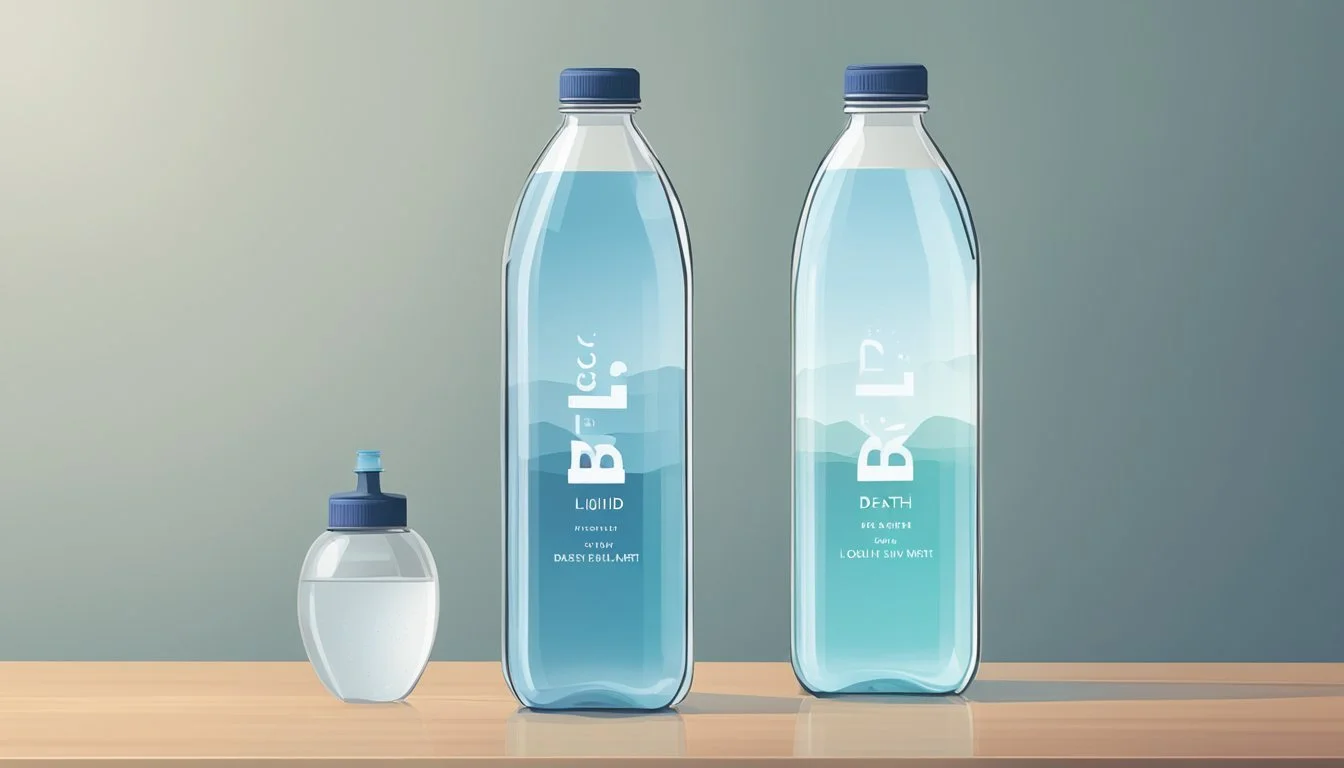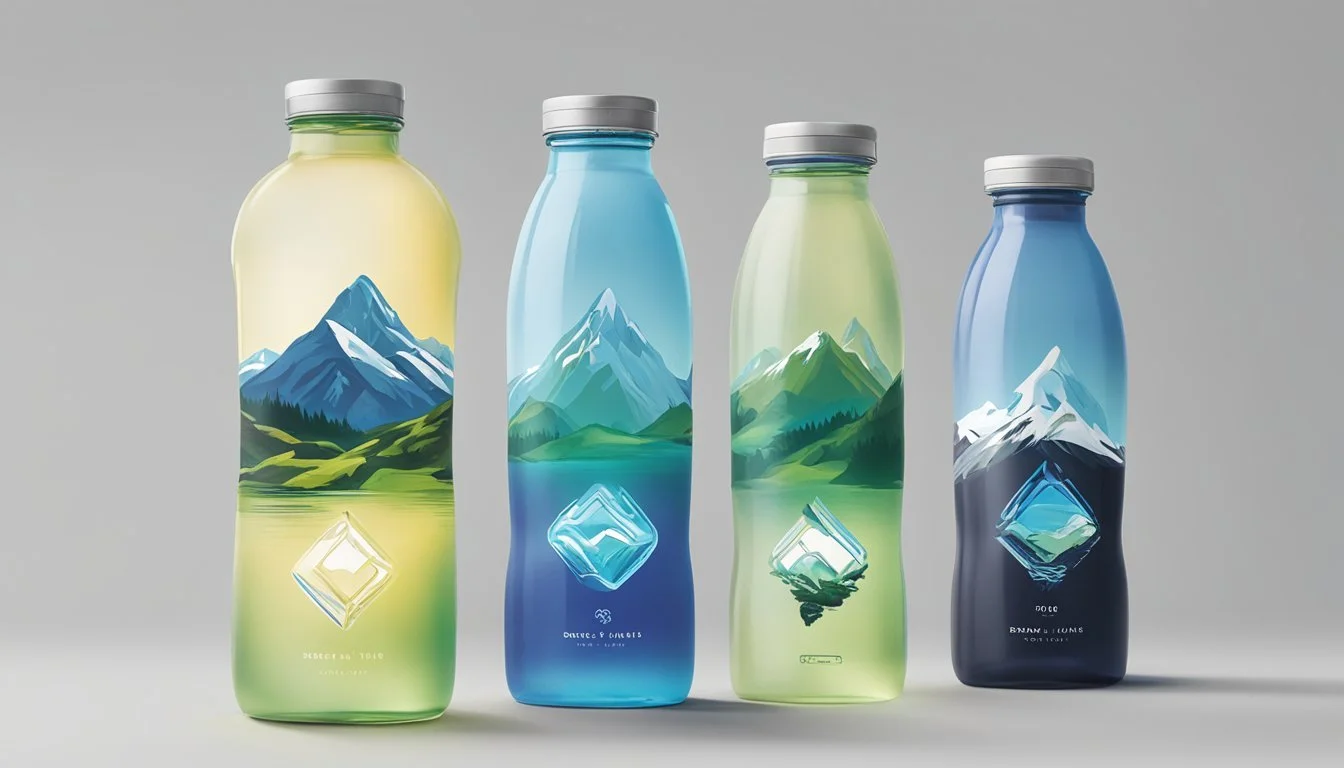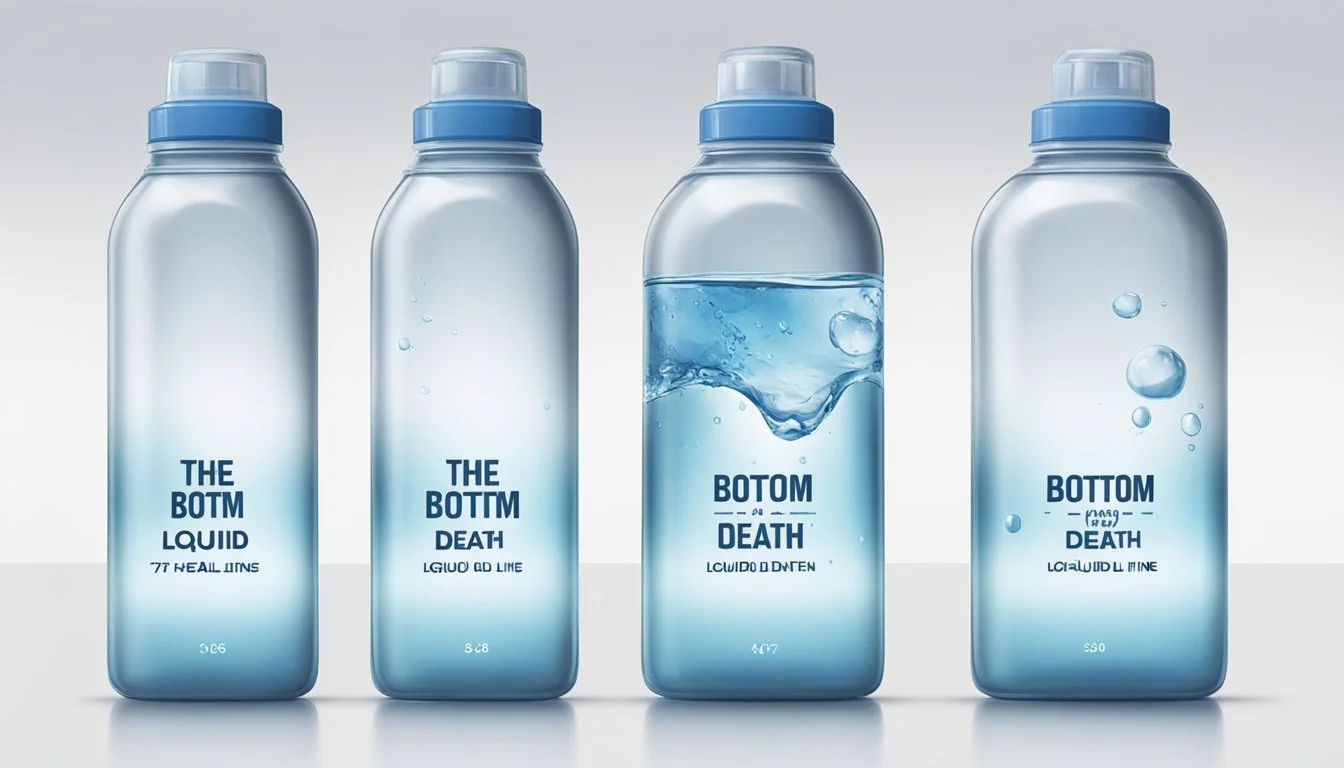Liquid Death vs. 7-Select
Bottled Water Showdown
When it comes to selecting the best bottled water, Liquid Death and 7-Select are two options that often come up in discussions. Liquid Death has carved a niche for itself with its unique branding and sleek aluminum cans, promoting a blend of sustainability and edgy marketing. Its water is sourced from the Austrian Alps and boasts a pH balance of 7.8+, offering a refreshing and pure experience that many appreciate.
On the other hand, 7-Select, the private label brand from 7-Eleven, offers convenience and affordability. Bottled in plastic, this water is readily available at 7-Eleven stores nationwide. While it may not have the same distinctive branding as Liquid Death, it prioritizes accessibility and ease of purchase.
Choosing between Liquid Death and 7-Select ultimately depends on what consumers value more. For those prioritizing sustainability and distinctive marketing, Liquid Death might be the preferred choice. Meanwhile, those seeking convenience and cost-effectiveness could lean towards 7-Select.
Understanding Bottled Water
Different types of bottled water offer various benefits based on their source, treatment process, and safety standards. These factors are crucial for consumers to consider when choosing the best bottled water option.
Categories of Bottled Water
Bottled water is generally classified into several categories, each distinguished by its source and processing methods. Spring water is derived from underground formations and must flow naturally to the earth's surface. Mineral water contains a specific amount of dissolved minerals and is obtained from protected underground sources. Purified water undergoes rigorous filtration and disinfection processes, such as reverse osmosis, to remove contaminants. Sparkling water is carbonated, either naturally or through added carbon dioxide, providing a fizzy texture.
Water Source and Origin
The source of bottled water significantly impacts its taste and quality. Spring water is often prized for its natural purity and is usually collected at the spring or from a borehole tapping the underground formation feeding the spring. Mineral water must be sourced from locations with distinctive geology, imparting unique characteristics and flavors due to its mineral content. Purified water can be sourced from any reliable water supply, but regardless of origin, it undergoes extensive treatment to ensure safety. For example, Liquid Death sources its water from the Austrian Alps, known for its high-quality mountain spring water.
Regulation and Safety Standards
The safety and quality of bottled water are strictly regulated. In the United States, the Food and Drug Administration (FDA) oversees bottled water standards, ensuring it meets the same safety requirements as tap water. Internationally, organizations like the International Bottled Water Association (IBWA) provide additional guidelines and certifications. Bottled water must undergo extensive testing for contaminants and microbial presence. Filtration and disinfection processes, such as reverse osmosis and ultraviolet light treatment, are commonly used to ensure the water's purity. Packaging also plays a critical role; using materials like recyclable aluminum can reduce the ecological impact compared to traditional plastic bottles.
Brand Overview
This section will provide a detailed look into the identities, origins, and unique selling propositions of Liquid Death and 7-Select.
Liquid Death: A Brand Profile
Liquid Death, founded in 2017, has made a significant impact in the bottled water market. The brand is known for its eye-catching aluminum cans and edgy marketing approach.
The water is sourced from the Austrian Alps, ensuring a high-quality product. Unlike many competitors, Liquid Death focuses on sustainability. The aluminum cans used are made from 70% recycled material. This choice reduces the environmental impact compared to plastic bottles.
Liquid Death has become available in popular stores like Whole Foods and 7-11. Consumers can choose between flat and sparkling water options. The brand's bold and unique identity has contributed to its valuation of $1.4 billion, appealing to a younger, environmentally-conscious demographic.
7-Select: Understanding the Brand
7-Select, owned by 7-Eleven, offers a range of convenience products, including bottled water. The 7-Select water is simply named "Purified Water from 7-Eleven."
7-Select bottled water is accessible, available at numerous 7-Eleven locations. This convenience appeals to consumers who prioritize ease of purchase. Compared to Liquid Death, 7-Select opts for traditional plastic packaging, which aligns with its cost-effective and mass-market approach.
7-Select’s marketing does not emphasize edgy branding or sustainability like Liquid Death. Instead, it focuses on providing a reliable and affordable product. This makes 7-Select a go-to option for everyday hydration needs, catering to a broad audience looking for convenience and affordability.
Health and Hydration
Liquid Death and 7-Select both offer bottled water options intended to enhance hydration and support overall health. Key factors to consider include the presence of essential electrolytes and the overall impact on hydration and health.
The Role of Electrolytes and Minerals
Electrolytes such as sodium, potassium, magnesium, and calcium are vital for maintaining bodily functions. Liquid Death's Death Dust contains sodium and potassium, important for hydration. Sodium helps balance fluids, while potassium supports muscle function.
7-Select’s water may not contain specific added electrolytes, focusing on pure hydration. Magnesium and calcium are essential for bone health and enzyme functions. Their presence in bottled water can provide additional health benefits.
Hydration and Health Impact
Pure water is crucial for hydration, supporting the body's natural functions and overall health. Liquid Death offers both sparkling and mountain water, with unflavored options recommended for pure hydration. These unflavored options are free from sugars and additives.
7-Select, available at many retailers, emphasizes accessibility and affordability, ensuring that hydration is within reach for most people. Proper hydration aids in maintaining immune function and overall wellness by ensuring that all bodily systems operate efficiently.
Quality and Purity Analysis
When comparing Liquid Death and 7-Select bottled waters, understanding their quality and purity is crucial. This involves looking at water quality indicators such as pH levels and contaminants, the purification methods used, and the transparency of quality reports.
Measuring Water Quality: pH and Contaminants
A key factor in water quality is its pH level, which should ideally fall close to neutral (7). Liquid Death, sourced from the Austrian Alps, typically has a pH level around 8, indicating slightly alkaline water. This alkalinity can be beneficial for neutralizing body acidity.
In terms of contaminants, Consumer Reports found that some bottled waters contain toxic PFAS chemicals. While specific data about Liquid Death isn't directly mentioned, general industry findings highlight the importance of checking for contaminants like lead, chlorine, and bacteria in any water brand.
Purification Techniques Compared
Different brands use various purification techniques to ensure water safety and quality. Liquid Death touts its origin from the pristine Austrian Alps, which already provides naturally clean water that goes through minimal processing. This often includes filtration to remove any suspended solids and ensure crisp taste.
On the other hand, 7-Select may use a variety of techniques such as reverse osmosis, distillation, and additional filtration. Reverse osmosis, in particular, is effective for removing a wide array of contaminants, including dissolved salts, chemicals, and bacteria, resulting in highly purified water.
Quality Reports and Transparency
Transparency in sharing water quality reports is vital for consumer trust. Liquid Death provides information on its website about the purity and origin of its water, including details of its aluminum cans made from 70% recycled material. This openness reassures customers about the product's safety and sustainability.
7-Select, associated with 7-Eleven, typically offers less detailed public information. However, consumers can find quality reports through customer service or specific inquiries. The availability and comprehensiveness of these reports can significantly impact perceived quality and trust.
These aspects, including pH levels, contaminants, purification techniques, and transparency of quality reports, are key when evaluating the quality and purity of bottled waters.
Product Offerings and Features
Liquid Death and 7-Select provide different options for consumers seeking bottled water. They vary in taste profiles, flavors, and formulations, which cater to distinct preferences.
Comparing Taste Profiles
Liquid Death, known for its intriguing branding, focuses on providing a pure, refreshing taste. It offers both still and sparkling water. The still water has a clean and crisp taste, while the sparkling option has a subtle effervescence that appeals to those who enjoy fizz without overpowering flavors.
7-Select, the in-house brand of 7-Eleven, offers water with a more straightforward, no-frills approach. It may include minerals such as calcium chloride and sodium bicarbonate to enhance flavor. This results in a smooth and slightly mineralized taste profile, which can feel more satisfying to consumers who prefer a hint of minerals in their water.
Variety of Flavors and Formulations
Liquid Death provides its water in still and sparkling varieties, and both can be purchased in multiple packaging options, such as six-packs or single cans. It's available at many popular retailers like Whole Foods and Sheetz, and it focuses on marketing its water with an edgy, unique appeal.
7-Select offers a broader range of flavored waters, which include options such as lemon, lime, and berry. These are usually available in convenient single-serving bottles. Unlike Liquid Death, 7-Select flavored waters may contain added sugars or natural flavors, catering to consumers looking for a tastier, more varied option alongside the basic still and sparkling water choices.
Environmental Impact and Packaging
Liquid Death and 7-Select differ significantly in their environmental impacts and packaging choices. These differences influence their sustainability, waste management practices, and overall carbon footprints.
Bottle Production and Plastic Use
Liquid Death uses aluminum cans, which are recyclable and contribute to lower plastic pollution. Aluminum production, while energy-intensive, has a higher recycling rate compared to plastic. This choice reduces the number of plastic bottles entering landfills.
7-Select, part of 7-Eleven’s private label, primarily offers bottled water in plastic containers. Plastic bottles are less environmentally friendly, as they often end up in waste streams and contribute to pollution. The production of plastic bottles involves petroleum-based materials, resulting in significant CO2 emissions. Plastic recycling rates are low, leading to long-term environmental issues.
Sustainability and Waste Management
Liquid Death relies on aluminum, which is infinitely recyclable. This promotes sustainability and reduces waste. Aluminum cans also lower the environmental impact associated with plastic waste, as they can be reused multiple times. Liquid Death's approach aligns with sustainability goals.
7-Select, on the other hand, faces challenges in waste management due to the less efficient recycling of plastic bottles. Many plastic containers are not recycled, ending up in oceans and landfills. Efforts to improve 7-Select’s sustainability include using recycled plastic in their bottles, but the problem of plastic waste persists. This positions 7-Select at a disadvantage in terms of sustainability when compared to Liquid Death.
Consumer Considerations
Liquid Death and 7-Select bottled waters offer distinct features for consumers. Examining price, availability, and label accuracy highlights critical factors influencing consumer choice.
Price Comparison and Value
When comparing Liquid Death to 7-Select, cost is a primary consideration. Liquid Death Mountain Water is typically priced at around $1.62 per can at Target, making it a premium choice. In contrast, 7-Select, often found in convenience stores, offers affordability with bottles costing significantly less, catering to budget-conscious consumers.
Liquid Death offers unique packaging, enhancing perceived value despite higher costs. While 7-Select opts for standard packaging to keep costs down. Consumers seeking a premium experience might justify the higher price of Liquid Death, whereas those prioritizing economical options might lean towards 7-Select.
Accessibility and Availability
Liquid Death is widely available online and in select retail stores such as 7-11, Sprouts Farmers Market, Whole Foods, and Sheetz. This diverse availability ensures easy access for consumers preferring online or in-store shopping.
On the other hand, 7-Select water is predominantly found in 7-11 convenience stores, making it highly accessible for quick, spontaneous purchases. This accessibility is advantageous for consumers needing readily available hydration options.
Consumers balancing convenience and availability may favor the brand aligning more with their shopping habits and location preferences.
Label Accuracy and Marketing
Label accuracy is crucial in building consumer trust. Liquid Death prides itself on clear labeling, with both flavored and unflavored options, ensuring consumers are well informed about their choices. Any ingredient specifics or claims about purity are transparently displayed.
7-Select, targeting the convenience segment, emphasizes straightforward labeling. Despite its lower price, it maintains accurate and honest labeling, assuring consumers about the product quality they are purchasing.
Marketing strategies differ significantly. Liquid Death uses bold, edgy marketing to create a distinctive brand image, appealing to a niche market looking for something unique. Conversely, 7-Select relies on its parent company's established reputation, focusing on practicality and ease of purchase.
Through clear labeling and strategic marketing, both brands cater to different consumer preferences, highlighting their strengths in transparency and brand communication.
Brand Reputation and Trust
Both Liquid Death and 7-Select are widely available options in the bottled water market, but their reputations differ significantly. These differences stem from aspects like marketing ethics, customer loyalty, and company responsiveness.
Marketing Ethics and Brand Perception
Liquid Death leverages a bold, edgy marketing approach. Their cans feature skull imagery and promote their commitment to sustainability with aluminum packaging that is 70% recycled. This appeals to environmentally-conscious consumers and those drawn to unique branding.
7-Select, on the other hand, takes a more straightforward approach. As the in-house brand of 7-Eleven, it emphasizes accessibility and affordability rather than distinctive branding. Its marketing focuses on being a reliable, convenient choice for customers.
Customer Loyalty and Reviews
Liquid Death has cultivated a strong following. Many reviews highlight the refreshing taste of its mountain spring water sourced from the Austrian Alps. The brand's unique persona and commitment to reducing plastic use resonate with a niche but loyal consumer base.
7-Select receives average reviews. Customers appreciate its consistent quality and low price. However, it lacks the fervent fanbase of more intensely marketed brands. Its loyalty primarily stems from the convenience of being available in 7-Eleven stores nationwide.
Company Responses and Engagements
Liquid Death actively engages with its audience, frequently responding to queries and comments on social media. They maintain transparent communication about their environmental initiatives, further bolstering brand trust.
7-Select's engagement is less individualized. The brand benefits from 7-Eleven's comprehensive customer service system, which efficiently handles feedback and queries. However, it doesn't have the same level of direct, personalized interaction that Liquid Death offers.
The Bottom Line
Liquid Death and 7-Select cater to distinct market segments.
Liquid Death, sourced from the Austrian Alps, offers options in both flat and sparkling varieties. Packaged in an aluminum can, it boasts a unique branding strategy that positions it as edgy and environmentally friendly with 70% recycled materials.
7-Select, the house brand of 7-Eleven, typically offers purified water in standard plastic bottles. It is widely accessible and offers a straightforward, no-frills experience. The emphasis is on convenience and affordability.
When it comes to accessibility, both brands are easy to find. Liquid Death is available in major retailers like Whole Foods and online. 7-Select is ubiquitous, as it is stocked at every 7-Eleven location, ensuring easy access.
Price Comparison:
Liquid Death: Approximately $1.62 - $1.69 per can.
7-Select: Typically lower, but exact prices can vary by location.
Environmental Impact:
Liquid Death uses aluminum cans, claiming higher recyclability and reduced environmental impact.
7-Select uses plastic bottles, which can be more widely recycled but have a higher overall environmental footprint.
Taste & Quality:
Liquid Death is known for its clean, crisp taste derived from mountain spring sources.
7-Select focuses on purified water, catering to those who prefer a neutral taste with no specific source.
In summary, Liquid Death appeals to the environmentally conscious and those looking for a unique brand experience, while 7-Select offers budget-friendly, easily accessible bottled water.
More About Liquid Death
Aqua Carpatica vs Liquid Death: Which Bottled Water is Better?
Core Hydration vs Liquid Death: Which Bottled Water is Better?
Hawaii Volcanic vs Liquid Death: Which Bottled Water is Better?
Hawaiian Springs vs Liquid Death: Which Bottled Water is Better?
Ice Mountain vs Liquid Death: Which Bottled Water is Better?
Icelandic Glacial vs Liquid Death: Which Bottled Water is Better?
Liquid Death vs Cascade Mountain: Which Bottled Water is Better?
Liquid Death vs Crystal Geyser: Which Bottled Water is Better?
Liquid Death vs Crystal Lake: Which Bottled Water is Better?
Liquid Death vs Essence pH10: Which Bottled Water is Better?
Liquid Death vs Kirkland Signature: Which Bottled Water is Better?
Liquid Death vs Proud Source: Which Bottled Water is Better?
Liquid Death vs Richard's Rainwater: Which Bottled Water is Better?
Liquid Death vs Simple Truth: Which Bottled Water is Better?
Liquid Death vs Talking Rain AQA: Which Bottled Water is Better?
Liquid Death vs Whole Foods 365: Which Bottled Water is Better?
Liquid Death vs Whole Foods Italian Still Mineral water: Which Bottled Water is Better?
Mountain Valley Spring Water vs Liquid Death: Which Bottled Water is Better?
Nestle Pure Life vs Liquid Death: Which Bottled Water is Better?
Poland Spring vs Liquid Death: Which Bottled Water is Better?
Purely Sedona vs Liquid Death: Which Bottled Water is Better?
San Pellegrino vs Liquid Death: Which Bottled Water is Better?
Solan de Cabras vs Liquid Death: Which Bottled Water is Better?
More About 7-Select
7-Select vs Kirkland Signature: Which Bottled Water is Better?
Cascade Mountain vs 7-Select: Which Bottled Water is Better?
Hawaiian Springs vs 7-Select: Which Bottled Water is Better?
Icelandic Glacial vs 7-Select: Which Bottled Water is Better?
Mountain Valley Spring Water vs 7-Select: Which Bottled Water is Better?
Nestle Pure Life vs 7-Select: Which Bottled Water is Better?
Richard's Rainwater vs 7-Select: Which Bottled Water is Better?
Talking Rain AQA vs 7-Select: Which Bottled Water is Better?
Whole Foods Italian Still Mineral water vs 7-Select: Which Bottled Water is Better?






